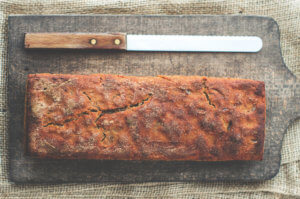
You stumble downstairs bleary-eyed, first thing in the morning, desperate for a cup of coffee and slice of toast. Yet it doesn’t take too long for the realization to kick in that the fresh loaf of bread that you’ve been salivating over is not actually so fresh anymore and has decided to open its home up to mold.
It’s a universal scenario that is probably all-too-familiar, no matter where you are in the world. But is there more to it than meets the eye?
There are lots of different kinds of mold that appear on bread, and although they are different species, they all have quite a lot in common: namely that they have been attracted to this source because of the rich organic nutrients found in it, such as sugar and carbohydrates, which fuels its growth. It’s also usually kept in a warm area of the kitchen – think a bread bin or cupboard – and is moist. The perfect party for mold, unfortunately.
Types Of Bread Mold
- Black Bread Mold. Also known (less commonly) as Rhizopus stolonifera, black bread mold is one of the most common types found and appears on wild fruits and vegetables – especially of they are growing in moist conditions. Despite its name, it usually appears as fuzzy blue or green patches on the surface of the bread which, if left untouched, will develop into black splotches found in its center.
- Penicillium Bread Mold. Yes, you are right in thinking this is connected to the antibiotic, but when found as mold on bread, you wouldn’t boost your health by consuming it (although some penicillium molds are used to flavor foods, such as blue cheese). It appears on bread in fuzzy white, gray or light blue patches. Check out our Q&A on other foods that mold is attracted to here.
- Cladosporium Bread Mold. The most irritating to those with allergies, prolonged exposure to this mold can cause sneezing, coughing and wheezing. It usually appears on the surface of bread as dark patches that range in color from deep green to black and also produces a noticeable odor, unlike other bread molds.
The Big Question
No-one’s looking: Do you pick off your new unsightly furry friends and continue your plan for a breakfast of champions, or toss the whole lot into the garbage?
The mold you see is indicative of a whole lot more going on beneath the surface, through its roots that stretch far into your food. What this means, therefore, is that when you consume the food – even after the tangible mold has been scraped off – you are, in fact, still consuming the fungus and bacteria contained in the mold.
Senior technical information specialist for the United States Department of Agriculture, Marianna Gravely, reportedly told NPR that the visible mold spores found on the surface have “a network of microscopic roots” that are often invisible to the human eye. She explains that because bread is a soft food, it’s very easy for the roots of the mold to “penetrate” deeply – not to mention the fact that mold can also spread from one slice to the other, so that pretty much rules out the entire loaf of bread, whether actual mold has been found on every slice or not. So no, it’s probably best not to eat moldy bread after you’ve cut off the mold!
Help! I’ve been guilty of doing this …
Relax – for most people eating mold-inflicted bread is not going to carry any serious repercussions. That being said, however, you should be aware of what the symptoms of eating moldy bread could be. Whilst eating black bread mold is not dangerous, for example, it can cause nausea, indigestion and vomiting, whereas Penicillium – which is also usually not dangerous – can produce mycotoxins, which have been linked to certain types of cancers. Cladosporium is likely to cause vomiting just by its strong scent alone and can also produce mycotoxins, so prolonged exposure is best avoided. Even smelling moldy bread is a big no-no, as it can cause respiratory problems. Read more about the consequences of eating moldy bread here.
Top Tips
- Keep small amounts of bread out at any one time – freezing the rest in sizeable portions in a sandwich bag
- Clean any area thoroughly where mold has been found
- Check neighboring items as mold spreads quickly
- To avoid breathing mold – which itself is dangerous – the USDA recommends putting contaminated food in a plastic bag before placing in a covered trashcan
from Mold Blogger https://moldblogger.com/moldy-bread/
Mold Remediation Baltimore
No comments:
Post a Comment